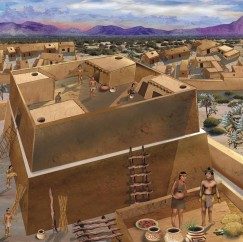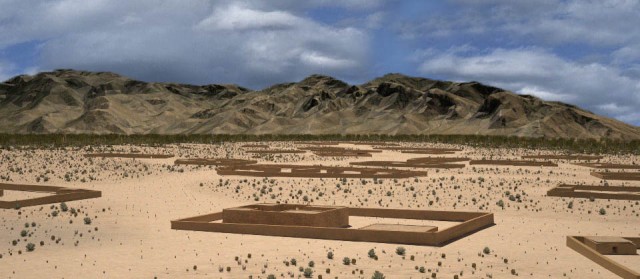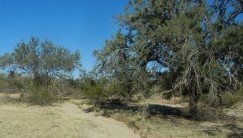- Home
- >
- Preservation Archaeology Blog
- >
- A Unique Preservation Opportunity
 Doug Gann, Preservation Archaeologist and Digital Media Specialist
Doug Gann, Preservation Archaeologist and Digital Media Specialist
We have a chance to preserve an intact ancient place, as well as a pristine stretch of Sonoran Desert.

Some 700 years ago, a dynamic agricultural society flourished in the lowlands of the desert southwest, with large villages settled in places where permanent sources of water could be used for irrigation. The remains of the villages, farming systems, and distinctive red-on-buff pottery were created by people archaeologists call Hohokam, whereas the Tohono O’odham refer to these ancient ancestors as Huhugam.
Call these folks what you will, but archaeological research over the past 100 years has revealed evidence that something went wrong with these ancient people’s way of life. In A.D. 1300, there were thousands of people living in large adobe-walled villages in the Tucson and Phoenix Basins. By the time of Spanish contact in the 1690s, there were only a few hundred people remaining, and their way of life was substantially different.
When our president and CEO, Bill Doelle, founded what would become Archaeology Southwest, he created an organization that was dedicated to researching this central question: What happened to the ancient farmers of the Sonoran Desert?
In studying this topic, the need for a Preservation Archaeology immediately became apparent. We needed to understand the archaeology of the Phoenix and Tucson Basins, but modern population growth was happening so quickly that much of the evidence needed to study what became of the ancient people who lived in this place was disappearing under farms and new residential subdivisions. The constructions of a southwestern land rush continue to erase critically important evidence of the past.
The Marana Mound—An Undisturbed Window on the Ancient Hohokam
Near Tucson, we are fortunate to know of one ancient village that has not been erased by farmers’ plows or buried by development. Now called the Marana Mound, the remains of this ancient village are in pristine condition and contain evidence of 40 adobe compounds, each containing ten to twenty rooms, as well as an ancient elevated platform mound that had four rooms built upon a platform of earth 3 meters (12 feet) above the surrounding desert floor. Research led by Arizona State Museum archaeologists Paul and Suzanne Fish showed that people lived at the Marana Mound Complex for a couple of generations around A.D. 1250. Paul and Suzanne’s research found that these people were masters of agave farming; they would have used agave for food and for the production of woven goods, such as shoes and other items made from the tough fibers of the plants.

The Threat
Unfortunately, the Marana Mound is situated near Interstate 10, in what has become prime real estate in the rapidly growing town modern town of Marana. To preserve this place, we need your help.
Make a difference

Pima County is considering the idea of purchasing the Marana Mound Complex in order to keep it undisturbed. The area could be then made into an archaeological preserve. However, the land is already quite expensive, as the surrounding areas are already under rapid development. We need you to join us in writing a letter of support to encourage Pima County to place the purchase of the Marana Mound Complex on the 2015 Bond Initiative. If we can generate enough support from the archaeological community to preserve this unique and undisturbed place of the past, we have an excellent chance of saving this place from future development. To my colleagues who first learned archaeological research at the Marana Mound “way back when”—your support could be particularly invaluable.
To send a letter of support for the preservation of the Marana Mound Complex, please write to:
Bond Advisory Committee
c/o Deseret Romero
Pima County Administrator’s Office, 10th Floor
130 West Congress,
Tucson, AZ 85701
Or, send your support over the Internet at https://webcms.pima.gov/cms/One.aspx?portalId=169&pageId=63512
To make sure your voice is heard, be sure your comments of support reference “2015 Bond No. HP-103: Marana Mound Site Acquisition.”
Personal Note
Decades ago, as a student employee of the Arizona State Museum, I was fortunate enough to help out at the Marana Mound under the direction of Paul and Suzanne Fish, and I freely admit a preservation bias. The platform mound village is invisible from Interstate 10, but the desert hides a place with a tangible, direct connection to the ancient past. We have the opportunity to set this place aside, preserved intact for future generations. I hope you will join me in supporting this effort.
Explore the News
-
Join Today
Keep up with the latest discoveries in southwestern archaeology. Join today, and receive Archaeology Southwest Magazine, among other member benefits.